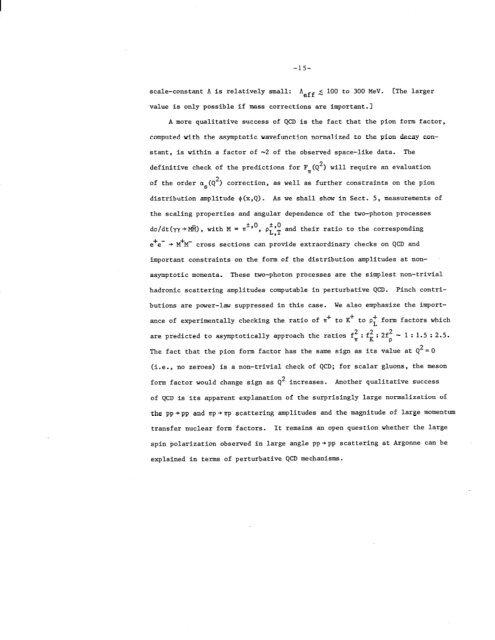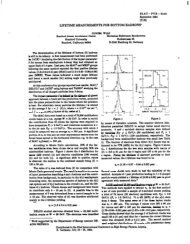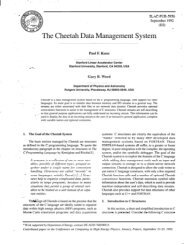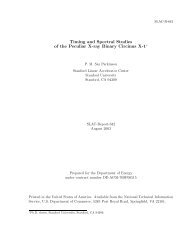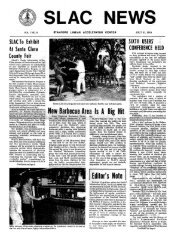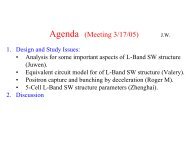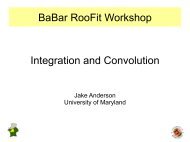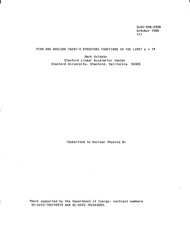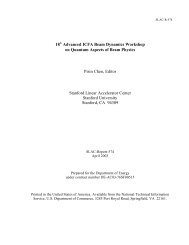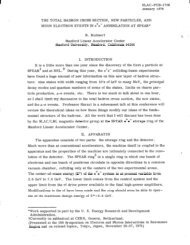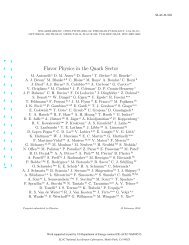slac-pub-2605 - SLAC - Stanford University
slac-pub-2605 - SLAC - Stanford University
slac-pub-2605 - SLAC - Stanford University
You also want an ePaper? Increase the reach of your titles
YUMPU automatically turns print PDFs into web optimized ePapers that Google loves.
-15-<br />
scale-constant A is relatively small: Aeff 5 100 to 300 MeV. [The larger<br />
value is only possible if mass corrections are important.1<br />
A more qualitative success of QCD is the fact that the pion form factor,<br />
computed with the asymptotic wavefunction normalized to the pion decay con-<br />
stant, is within a factor of -2 of the observed space-like data. The<br />
definitive check of the predictions for F,(Q') will require an evaluation<br />
of the order as(Q2) correction, as well as further constraints on the pion<br />
distribution amplitude (p(x,Q). As we shall show in Sect. 5, measurements of<br />
the scaling properties and angular dependence of the two-photon processes<br />
+o<br />
do,dt(yy+M%), with M = a-' , pt'i and their ratio to the corresponding<br />
,<br />
e+e- -+ M+M- cross sections can provide extraordinary checks on QCD and<br />
important constraints on the form of the distribution amplitudes at non-<br />
asymptotic momenta. These two-photon processes are the simplest non-trivial<br />
hadronic scattering amplitudes computable in perturbative QCD. Pinch contri-<br />
butions are power-law suppressed in this case. We also emphasize the import-<br />
ance of experimentally checking the ratio of If to K+ to pL + form factors which<br />
are predicted to asymptotically approach the ratios ff : fi: 2fi - 1:1.5 : 2.5.<br />
The fact that the pion form factor has the same sign as its value at Q2=0<br />
(i.e., no zeroes) is a non-trivial check of QCD; for scalar gluons, the meson<br />
form factor would change sign as Q2 increases. Another qualitative success<br />
of QCD is its apparent explanation of the surprisingly large normalization of<br />
the pp+pp and xp+np scattering amplitudes and the magnitude of large momentum<br />
transfer nuclear form factors. It remains an open question whether the large<br />
spin polarization observed in large angle pp+pp scattering at Argonne can be<br />
explained in terms of perturbative QCD mechanisms.


